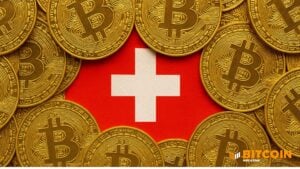Venezuela and Zimbabwe Lead the Way
According to the latest statistics from the International Monetary Fund's World Economic Outlook, ten nations are currently facing inflation rates exceeding 40% as of October 2023. Among these countries, Venezuela takes the top spot with a staggering inflation rate of 360%, closely followed by Zimbabwe at 314.5%. These soaring inflation rates have severe implications for both consumers and businesses, leading to decreased purchasing power and economic instability.
The Impact of Inflation
When a country experiences high inflation, it means that the value of its currency is rapidly declining. This translates to a reduced ability to purchase goods and services with the same amount of money. As a result, consumers struggle to afford basic necessities, while businesses face challenges in maintaining profitability. Inflation rates above 50%, known as hyperinflation, exacerbate these issues further.
A Closer Look at Venezuela and Zimbabwe
Venezuela, situated in South America, has long been plagued by hyperinflation. The Venezuelan bolivar has continuously struggled against diminishing purchasing power, resulting in an inflation rate of 360%. Similarly, Zimbabwe's currency, the Zimbabwean dollar, is grappling with triple-digit inflation, currently standing at 314.5%. Both countries have been battling escalating inflation for an extended period, leading to economic turmoil and financial instability.
Inflation Woes Extend to Other Nations
Apart from Venezuela and Zimbabwe, several other countries are also facing significant inflation challenges. Sudan, located in Northeast Africa, is enduring an inflation rate of approximately 256.2%, causing its currency, the Sudanese pound, to plummet in value. Argentina, situated in South America, is experiencing an inflation rate of 121.7%, primarily driven by a swift increase in money supply. Meanwhile, Suriname, the smallest sovereign nation in South America, is grappling with an inflation rate of 53.3%, resulting from rampant money creation and fiscal imbalances.
Turkey's Inflation Struggles
Turkey, straddling Southeast Europe and West Asia, is contending with an inflation rate of 51.2%. The country's economic challenges stem from President Recep Tayyip Erdogan's unconventional approach favoring low interest rates. Turkey's history is marked by prolonged periods of rapid inflation, posing significant obstacles to economic stability.
Barter Systems and Digital Currencies Offer Respite
In the face of such high inflation rates, residents in these countries are resorting to various strategies to mitigate the effects. One such strategy is the adoption of barter systems, where goods and services are traded directly, bypassing the need for weakened national currencies. Additionally, digital currencies like bitcoin (BTC) and stablecoins are gaining popularity as alternative means of preserving wealth. Reports indicate that cryptocurrency usage is prevalent in regions heavily affected by inflation, with stablecoins like USDT being widely used for settlements.
A Global Trend
Inflation above 40% is not limited to the ten countries mentioned. Sri Lanka, Iran, Haiti, Sierra Leone, and Ghana are also grappling with high inflation rates, ranging from 42.2% to 48.19%. The widespread adoption of barter systems and digital currencies highlights the growing need for alternative financial solutions in these inflation-ridden nations.
In conclusion, the ten countries facing soaring inflation rates above 40% are experiencing significant economic challenges. The impact on consumers and businesses is severe, leading to decreased purchasing power and financial instability. As residents search for ways to mitigate these effects, barter systems and digital currencies offer a glimmer of hope in an otherwise challenging economic landscape.
Frequently Asked Questions
How much do gold IRA fees cost?
An Individual Retirement Account (IRA) fee is $6 per month. This includes account maintenance and any investment costs.
If you want to diversify, you may be required to pay extra fees. The fees you pay will vary depending on the type of IRA that you choose. For example, some companies offer free checking accounts but charge monthly fees for IRA accounts.
A majority of providers also charge annual administration fees. These fees vary from 0% to 11%. The average rate per year is.25%. However, these rates are typically waived if you use a broker like TD Ameritrade.
Should You Invest in gold for Retirement?
This will depend on how much money and whether you were able to invest in gold at the time that you started saving. If you're unsure about which option to choose then consider investing in both.
Gold is a safe investment and can also offer potential returns. Retirees will find it an attractive investment.
Gold is more volatile than most other investments. Therefore, its value is subject to change over time.
This does not mean you shouldn’t invest in gold. It is important to consider the fluctuations when planning your portfolio.
Another advantage of gold is its tangible nature. Gold is less difficult to store than stocks or bonds. It can also be carried.
Your gold will always be accessible as long you keep it in a safe place. Plus, there are no storage fees associated with holding physical gold.
Investing in gold can help protect against inflation. As gold prices rise in tandem with other commodities it can be a good hedge against rising cost.
It's also a good idea to have a portion your savings invested in something which isn't losing value. When the stock market drops, gold usually rises instead.
You can also sell gold anytime you like by investing in it. Like stocks, you can sell your position anytime you need cash. It doesn't matter if you are retiring.
If you do decide to invest in gold, make sure to diversify your holdings. Do not put all your eggs in one basket.
Do not buy too much at one time. Start small, buying only a few ounces. Then add more as needed.
Don't expect to be rich overnight. Instead, the goal is to accumulate enough wealth that you don't have to rely on Social Security.
And while gold might not be the best investment for everyone, it could be a great supplement to any retirement plan.
Can the government take your gold
Your gold is yours and the government cannot take it. You have earned it by working hard for it. It belongs to your. However, there may be some exceptions to this rule. If you are convicted of fraud against the federal government, your gold can be forfeit. You can also lose precious metals if you owe taxes. However, even if you don't pay your taxes, your gold can be kept as property of the United States Government.
How is gold taxed in Roth IRA?
An investment account's tax is calculated based on the current value of the account, and not on what you paid originally. All gains, even if you have invested $1,000 in a mutual funds stock, are subject to tax.
But if you put the money into a traditional IRA or 401(k), there's no tax when you withdraw the money. You pay taxes only on earnings from dividends and capital gains — which apply only to investments held longer than one year.
The rules governing these accounts vary by state. In Maryland, for example, withdrawals must be made within 60 days of reaching the age of 59 1/2 in order to qualify. Massachusetts allows you to wait until April 1. New York has a maximum age limit of 70 1/2. To avoid any penalties, plan your retirement savings and take your distributions as early as possible.
Statistics
- Instead, the economy improved, stocks rebounded, and gold plunged, losing 28 percent of its value in 2013. (aarp.org)
- The price of gold jumped 131 percent from late 2007 to September 2011, when it hit a high of $1,921 an ounce, according to the World Gold Council. (aarp.org)
- Contribution limits$6,000 (49 and under) $7,000 (50 and up)$6,000 (49 and under) $7,000 (50 and up)$58,000 or 25% of your annual compensation (whichever is smaller) (lendedu.com)
- Indeed, several financial advisers interviewed for this article suggest you invest 5 to 15 percent of your portfolio in gold, just in case. (aarp.org)
- If you take distributions before hitting 59.5, you'll owe a 10% penalty on the amount withdrawn. (lendedu.com)
External Links
bbb.org
cftc.gov
- Fraud Advisory: Precious Metals Fraud
—————————————————————————————————————————————————————————————-
By: Jamie Redman
Title: 10 Countries Worldwide Grapple With Soaring Inflation Rates
Sourced From: news.bitcoin.com/from-venezuelas-360-to-ghanas-42-10-countries-worldwide-feel-the-sting-of-inflation/
Published Date: Sun, 29 Oct 2023 18:30:28 +0000














